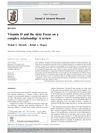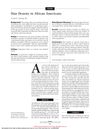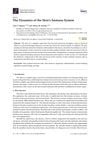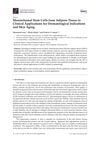TLDR Dark skin is more prone to severe pressure ulcers due to reduced ceramide content and detection challenges.
This scoping review investigates the physiological differences in pressure ulcer (PU) response among individuals with varying skin tones, emphasizing that dark skin is more prone to severe PUs due to factors like reduced ceramide content, which compromises barrier integrity, and challenges in early detection. Despite structural differences, the risk of PU formation is similar across skin types when mechanical stress exceeds a critical threshold. The review identifies key physiological factors such as tissue ischemia, collagen density, and inflammatory responses, and calls for further research to develop targeted prevention and treatment strategies to improve patient outcomes and reduce health disparities. Five articles met the inclusion criteria, providing insights into the relationship between skin tone and PU susceptibility.
12 citations
,
October 2023 in “International Journal of Molecular Sciences” Understanding how skin cells react to pressure can help diagnose and manage pressure-related skin disorders.
 139 citations
,
February 2014 in “Journal of Advanced Research”
139 citations
,
February 2014 in “Journal of Advanced Research” Vitamin D is important for skin health and may affect conditions like psoriasis and hair loss, but more research is needed to understand its role fully.
450 citations
,
January 2005 in “The journal of investigative dermatology/Journal of investigative dermatology” Hair color is determined by melanin produced and transferred in hair follicles.
 129 citations
,
June 1999 in “Archives of Dermatology”
129 citations
,
June 1999 in “Archives of Dermatology” African Americans have less hair density than whites.
 25 citations
,
December 2021 in “Stem Cell Research & Therapy”
25 citations
,
December 2021 in “Stem Cell Research & Therapy” MSCs and their exosomes may speed up skin wound healing but need more research for consistent use.
12 citations
,
May 2024 in “International Journal of Nanomedicine” Stem cell-derived vesicles show promise for healing diabetic wounds.
 306 citations
,
April 2019 in “International Journal of Molecular Sciences”
306 citations
,
April 2019 in “International Journal of Molecular Sciences” The skin has a complex immune system that is essential for protection and healing, requiring more research for better wound treatment.
 132 citations
,
January 2017 in “International Journal of Molecular Sciences”
132 citations
,
January 2017 in “International Journal of Molecular Sciences” Fat-derived stem cells show promise for skin repair and reducing aging signs but need more research for consistent results.
 7 citations
,
June 2022 in “Frontiers in Medicine”
7 citations
,
June 2022 in “Frontiers in Medicine” ADSC-derived extracellular vesicles show promise for skin and hair regeneration and wound healing.





